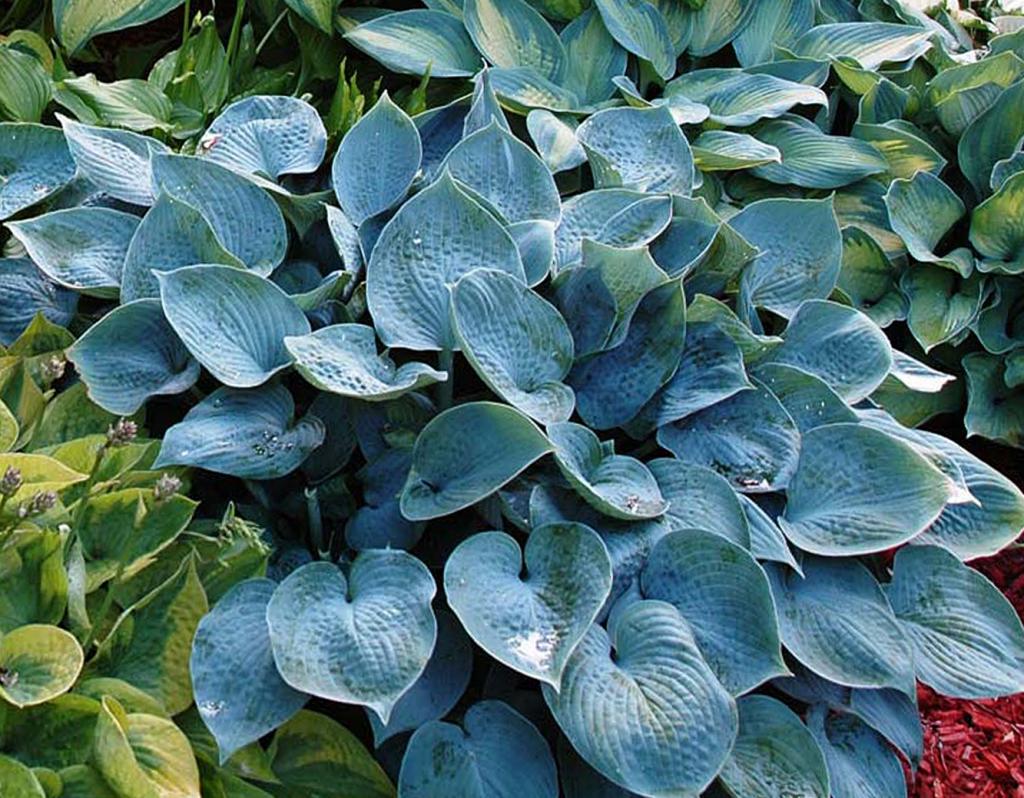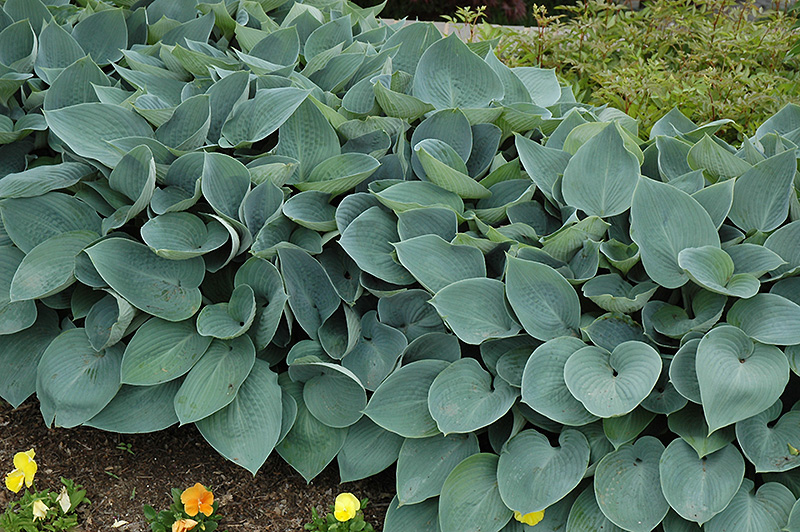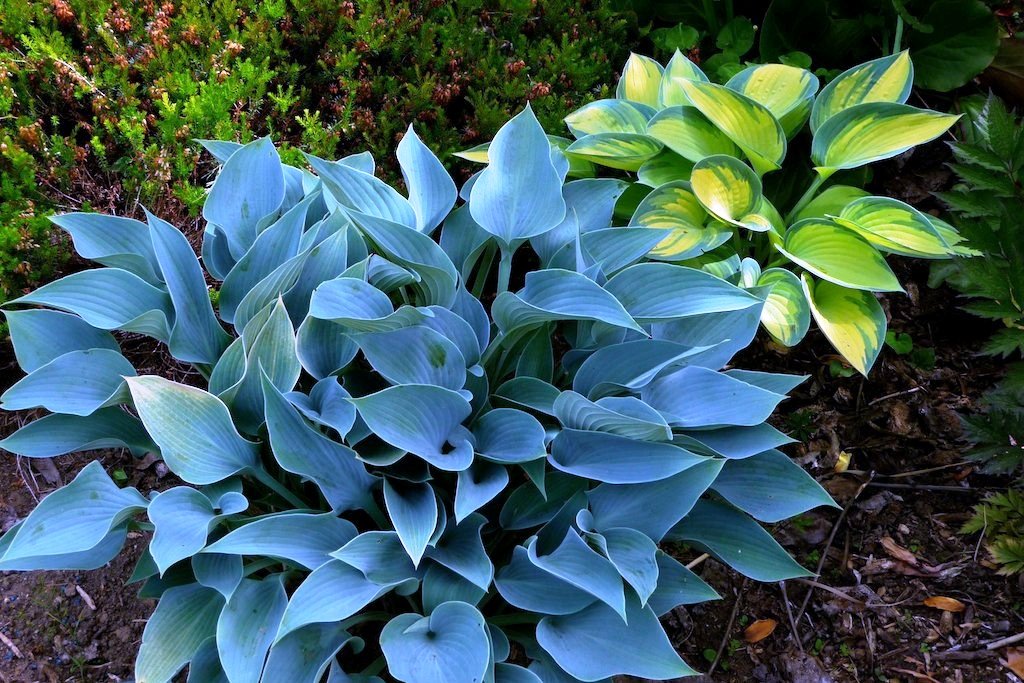Hosta Halcyon - the blue queen of the shady garden
Hosta is the queen of the shady garden, the number of varieties with various shapes and colors of foliage is amazing. A wonderful perennial has won many fans among gardeners. And it is not surprising, because in every garden there is at least one shady corner. Hostas with blue foliage, such as the Halcyon variety, have a special charm.

Hosta Halcyon photo
Description of the variety
Hosta hybrida Halcyon is one of the popular classic blue varieties. The name can be translated as "serenity" or "kingfisher".
The cultivar is over 30 years old and is a hybrid seedling of late flowering Tardian hosts. In 1988 Halcyon was registered by the British Host and Daylily Society. Until now, it is considered one of the best in terms of the saturation of the color of the leaves. He gave rise to many varieties, the most famous are his "daughters" - varieties June and First Frost.
Halcyon belongs to medium-sized hosts, group M (medium). The size of the bush is 45 cm in height and 60-100 cm in width, the shape of the bush is domed. Grows medium. During flowering, it throws out peduncles with brushes of pale lavender flowers up to 70 cm high.
The main highlight of the variety is its deep blue-green color, which lasts all season. The dimensions of the pointed, heart-shaped leaves are 10x16 cm. The leaf blade is dense, even or slightly wavy, covered with a waxy coating that protects the leaf from sunburn.
Landing features
Hosta Halcyon is not critical to sunlight and withstands planting in both shaded and sunlit places. The best location for this variety will be partial shade with morning sunlight, the main thing is that the bush has enough moisture.

Hosta late Halcyon
Timing
The host can be planted both in spring and autumn. True, in the first case, the plant has more chances for a successful start.
Timing:
- In spring - end of April - first decade of May.
- Autumn - first half of September.
As a rule, adult hosts are planted in autumn at the moment when the foliage begins to turn yellow. Plants must have time to take root before frost. The foliage completely dies off for the winter, the rhizome goes into a dormant state.
Seat selection
When choosing a place for planting hosts, you need to know that the plant prefers loose, moist, breathable soils with a slightly acidic reaction. In the landing site, water should not stagnate after rain or melting snow.
Preparation of planting material
Host seedlings are sold in a bag with peat and in pots with a closed root system. We will tell you how to choose high-quality planting material:
- elastic rhizome;
- developed root lobe;
- the presence of green sprouting buds;
- sprouted leaves in the bag are undesirable, they are prone to rot.
Hosta roots are prepared for planting by planting in pots with loose soil. Seedlings are kept in a cool, bright room. By the time of planting in a permanent place, a root ball is formed and leaves appear.
The price of planting material in pots is more expensive. The seedling in the shopping center has already undergone pre-planting preparation. Choose plants with a formed rosette of leaves and no external damage.
In summer, the host is sold by private traders in the market. Before buying, inspect the root system: the roots should be strong, not dried out.
Landing technology
Before boarding, the hosts prepare the selected place as follows:
- dig up the soil on the bayonet of the shovel;
- fertilizers are covered up on poor soils (rotted humus, compost);
- dig a hole with a diameter of 2 times the root ball;
- a drainage layer is poured onto the bottom of the fossa;
- half-fill the hole with soil, form a cone on top.
Next, the seedling is placed on a cone, with the apical bud at ground level. The roots of the seedling are spread along the sides of the hill. The remaining volume is covered with soil, compacted and watered with warm water.
Important: regardless of the planting site, hosta seedlings with leaves must be shaded.
Care
Caring for the hosta Halcyon includes watering, weeding, mulching, feeding if necessary.

Halcyon host description
Hosta is a moisture-loving plant, but it must be watered carefully, at the root, in the morning. Drops of water sprayed on the leaves provoke sunburn, and evening watering attracts hosta pests - slugs.
Moistening is carried out regularly, preventing the soil from drying out.
Mulching helps both to retain moisture in the soil and to protect the roots from frost. Despite the fact that Halcyon is a winter-hardy variety, it is better to cover young plants for the winter.
Top dressing with universal fertilizers is applied in late spring - first half of summer. Since August, the host is not fed.
After flowering, the peduncles are cut off. Leaves are removed in the fall only after dying off.
Reproduction
The most commonly used vegetative propagation of the host: dividing the bush and summer cuttings. Seed propagation does not always convey the properties of the mother plant.
Dividing the bush
Hosts are slow-growing perennials and respond poorly to bush division. You can share hosts from the age of 5-6. The operation is performed in spring or early autumn.
The plant is dug up and divided into pieces with two to three bunches of leaves. The wounds are sprinkled with charcoal powder. They are seated in prepared holes.
Cuttings
In June-July, hosts are propagated by cuttings of lateral shoots. Rake the soil from the base of the bush, then separate a piece of rhizome with a rosette of leaves. To reduce evaporation, the leaf blades of the cuttings are shortened by a third. The cuttings are planted, sheltered from the sun, and watered thoroughly, preventing the soil from drying out.
Seed propagation
Hosta Halcyon sets full-fledged seeds. You can experiment and sow them, but the varietal traits of the seedlings will most likely not persist. Seeds are sown immediately after harvesting to a depth of 2-3 cm. Seedlings appear after 10 days.
Diseases and pests
An important element of care is disease prevention and pest control. Preventive measures - to prevent thickening of the bushes, excessive moisture.

Hosta halcyon reviews
Unfortunately, hosts, like other liliaceae, sometimes contract the virus. Signs - yellow spots on the leaves and their deformation. The disease is not cured, you have to get rid of diseased plants.
Brown spots on the leaves are signs of fungal diseases. Fungicides are used to combat them.
Host leaves often damage slugs. To combat them, the soil under the bushes is powdered with ash, red pepper powder, bait-traps or metaldehyde preparations are laid out.
Landscape use
Hosta Halcyon is not only used as a shade garden plant. It can be planted in curbs, in groups of perennials, in containers, near water bodies. It goes well with geykhera, hellebores, mountain goats, astilbe, ground cover plants.
Testimonials
According to gardeners, Halcyon is not capricious, it forms a very beautiful bush.It practically does not burn in the sun. It goes well with coniferous shrubs.

